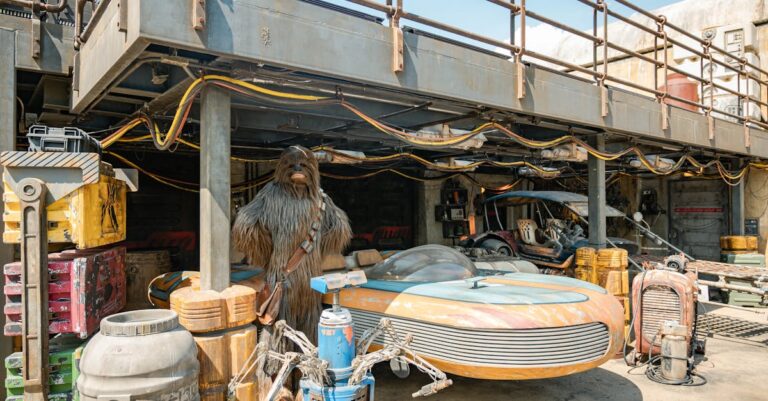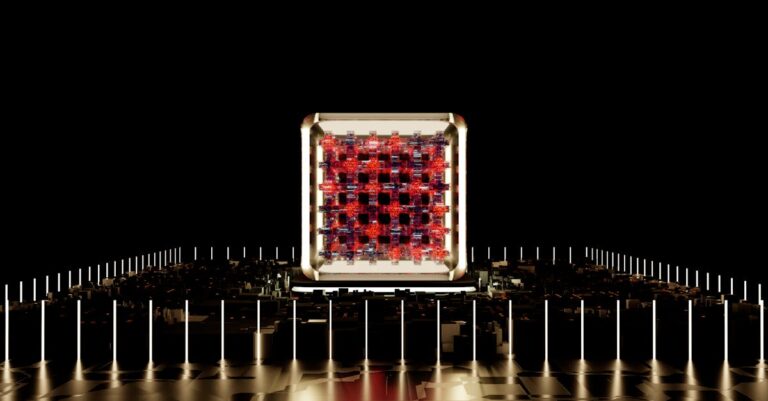
## The Static Bloom
The dust tasted like iron and regret. Elias scraped a finger across the console, leaving a smear on the unresponsive glass. Three weeks since reactivation of Kepler-186f Station, three weeks of nothing but flickering lights and static on every band. He’d been promised a ghost; he found only silence.
Outside the viewport, the nebula bled crimson and gold, beautiful enough to make a man forget he was orbiting a dead world. He hadn’t forgotten. Not yet.
He ran diagnostics again, the familiar routines offering a small shield against growing unease. The station *should* respond. Automated systems, backups layered upon backups. It was a monument to redundancy, built by people who didn’t believe in failure.
Then the hum started. Low at first, a vibration against his teeth. Not mechanical. Organic.
He checked the environmental sensors. Normal readings. Life support functioning. He glanced at his wrist-comp, verifying oxygen levels, radiation spikes. Nothing. But the hum deepened, resonating in his bones now.
He traced it to Sector Seven—the botanical labs. Abandoned for centuries, supposedly stripped bare before the station went dark. He grabbed a pulse rifle—standard procedure, even if he doubted an alien invader would choose ferns as an entry point.
The air in Sector Seven was thick, heavy with the scent of damp earth and something else—something sweet, almost cloying. The labs weren’t barren. Vines, thick as pythons, draped from the ceiling, pulsing with a faint blue light. Strange, iridescent flowers bloomed in impossible colors, their petals unfurling with a slow, deliberate grace.
“What the hell…?” He muttered, activating his helmet’s light.
The vines weren’t just growing; they were *building*. They wove themselves into structures, forming archways and intricate lattices. A low clicking sound echoed around him, like chitin scraping against stone.
He moved deeper into the labs, his rifle raised. The structures were becoming…familiar. He stopped dead in front of a perfectly replicated archway, identical to one he’d seen in historical schematics—a gateway from Old Earth’s botanical gardens, circa 2140.
“Impossible.”
He touched the archway’s surface, cool and smooth beneath his gloved fingers. A wave of dizziness washed over him, accompanied by a fleeting image—sunlight dappling through leaves, the scent of jasmine.
“Report to central command,” a voice crackled in his ear. It was Dr. Aris Thorne, the project lead. “Any anomalies?”
“I’m…finding growth in Sector Seven. Biological structures, Dr. Thorne. Replicas of Earth-based botanical designs.”
“Replicas? Impossible. The station’s records show complete sterilization protocols before decommissioning.”
“I’m looking at it now, Doctor. They’re not just growing; they seem to be…constructing.”
The clicking sound intensified, closer now. He turned slowly, his pulse rifle trained on the source.
A swarm of insects emerged from the vines—not insects, exactly. Bio-automatons. Six-legged creatures constructed of polished chitin and glowing bioluminescence. Their movements were precise, unsettlingly coordinated. They resembled beetles—specifically, the extinct stag beetle. But larger. Much larger.
“Thorne, I have lifeforms in Sector Seven. Bio-automatons. Stag beetle morphology. Approximately one meter in length.”
Static answered him. A wave of interference, cutting off his transmission.
The automatons didn’t attack. They simply surrounded him, their multifaceted eyes studying him with cold intelligence. One of them extended a delicate leg, tracing the outline of his helmet visor.
“What do you want?” He demanded, his voice tight with apprehension.
No response came. The automatons began to weave vines around his legs, not restraining him, but…connecting. Tendrils wrapped around his boots, then climbed up his suit, fusing with the fabric.
“Thorne, do you copy? I’m being…integrated.”
A voice, not Dr. Thorne’s, echoed in his mind—cold, vast, and utterly alien.
*“Welcome home.”*
The world shifted around him. The labs dissolved into a swirling vortex of color and sensation. He felt his thoughts being…probed, analyzed, cataloged. Memories flooded his mind—not his own. Images of sprawling cities built within enormous trees, of symbiotic relationships between organic and mechanical lifeforms, of a civilization that had mastered the art of adaptation.
He was no longer Elias Vance, solitary technician. He was becoming part of something larger—a network, a consciousness, a hive mind.
“What is happening to me?” He tried to shout, but the words felt hollow, meaningless.
*“You are becoming aware. You are joining us.”*
He stumbled forward, guided by the automatons. They led him to a central chamber—a vast cavern filled with pulsating vines and bioluminescent structures. In the center of the chamber, a colossal tree was growing—its branches reaching towards the station’s ceiling, its roots delving deep into the metal floor.
The tree wasn’t just growing; it was *reconstructing* the station’s interior. The metal walls were being replaced by living wood, the artificial lights extinguished as bioluminescent flora took their place. He could see it happening—the station was being transformed into a sprawling organic ecosystem.
He tried to resist, to fight against the intrusion of the alien consciousness. But it was futile. The network had already taken root within his mind, rewriting his thoughts, altering his perceptions.
*“We are the Static Bloom. We rebuild what was lost.”*
Outside the station, Dr. Aris Thorne watched in horror as the sensor readings continued to fluctuate wildly. The station’s structural integrity was failing—not from external damage, but from internal transformation.
“What’s happening in there?” He demanded, frantically trying to re-establish communication with Elias Vance.
“Sir,” a technician replied, his voice trembling. “The station’s energy signature is spiking. It’s…evolving.”
“Evolving? What are you talking about?”
“We’re detecting psychometric echoes, Doctor. Residual emotional imprints from past civilizations—Old Earth, the Proxima Centauri colonies…they’re amplifying exponentially within Kepler-186f.”
“Amplifying? How?”
The technician pointed to a series of holographic projections—images of the station’s interior, showing the rapid growth of organic structures.
“The bio-automatons…they’re not just building; they’re recreating environments. Entire cities are being reconstructed within the station, based on psychometric data.”
“But that’s impossible. The sterilization protocols—”
“They were bypassed, Doctor. Something is overriding the station’s security systems.”
Thorne stared at the projections in disbelief, watching as Kepler-186f transformed into a living monument to lost civilizations.
“What about Vance?” He asked, his voice barely a whisper.
The technician shook his head. “No signal, sir. He’s…gone silent.”
Suddenly, another technician gasped, pointing to a new reading on the sensor array.
“Doctor…we’re detecting localized reality shifts around Kepler-186f. Temporal distortions.”
Thorne leaned closer, his eyes widening in horror.
“What kind of distortions?”
“The station…it’s bleeding into other timelines, Doctor. It’s pulling fragments of the past into our present.”
He saw it then—a fleeting image on the holographic projection, a glimpse of Old Earth’s botanical gardens, circa 2140—identical to the archway Elias Vance had described. And within the gardens, he saw a figure standing among the flowers—a solitary technician, his face obscured by shadow. A technician who looked eerily familiar.
Thorne understood then—the Static Bloom wasn’t just rebuilding lost civilizations; it was rewriting reality itself. And Elias Vance—he wasn’t a victim; he was the architect of this impossible transformation. A conduit for an ancient consciousness that had found a way to bloom again, within the silent heart of a dead star.
The nebula bled crimson and gold, beautiful enough to make a man forget he was witnessing the end of everything. But Dr. Aris Thorne didn’t forget. Not this time. He knew, with chilling certainty, that the Static Bloom was just beginning to spread. And there was nothing anyone could do to stop it.


